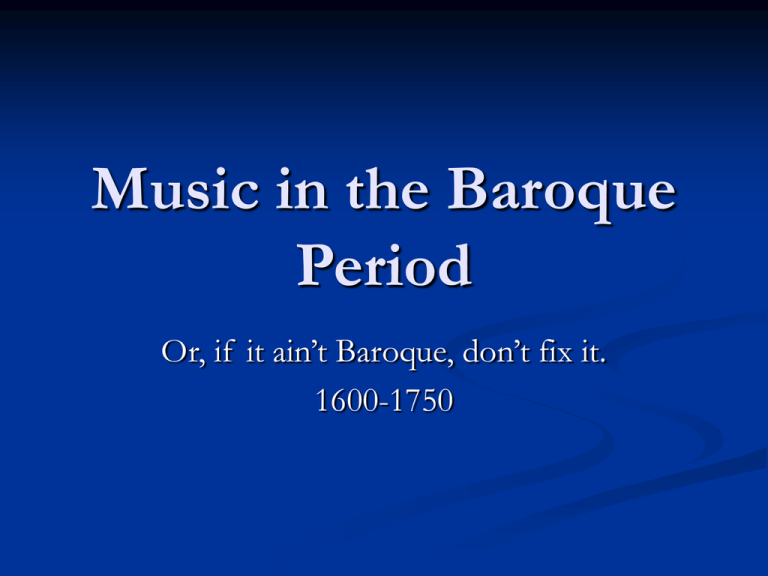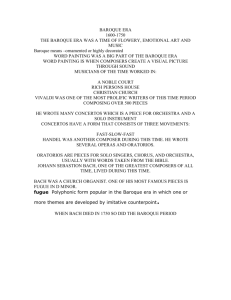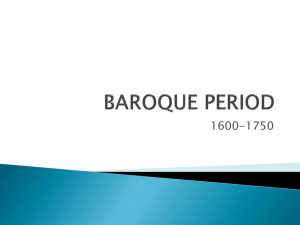Music in the Baroque Period
advertisement

Music in the Baroque Period Or, if it ain’t Baroque, don’t fix it. 1600-1750 Definition of Baroque “Baroque” is a term used to indicate a particular style in the arts “Baroque”: Fills space with action and movement Highly structured, detailed, and ornamented Suited the tastes of the aristocracy Music and Society Aristocracy extremely powerful Hired a court composer and court musicians Demand was for “new” music Music was main source of fun and entertainment Court v. Church Music Directors Characteristics of Baroque Music Unity of Mood Continuity of Rhythm Melodically driven Terraced Dynamics Polyphonic: 2 or more melodies competing for our attention Chords Basso continuo/Figured bass Baroque Orchestra Evolution of orchestra based on instruments of the violin family 10-40 players Some use of trumpets and timpani Late baroque uses more brass and woodwinds Musical Forms Introduction of the Concerto The Fugue Subject & Countersubject Oratorio OPERA! Elements of Opera Libretto Overture or Prelude Recitative Accompanied v. Unaccompanied Aria, especially da capo aria Baroque Composers Claudio Monteverdi Henry Purcell Arcangelo Corelli Antonio Vivaldi George Frideric Handel Johann Sebastian Bach





